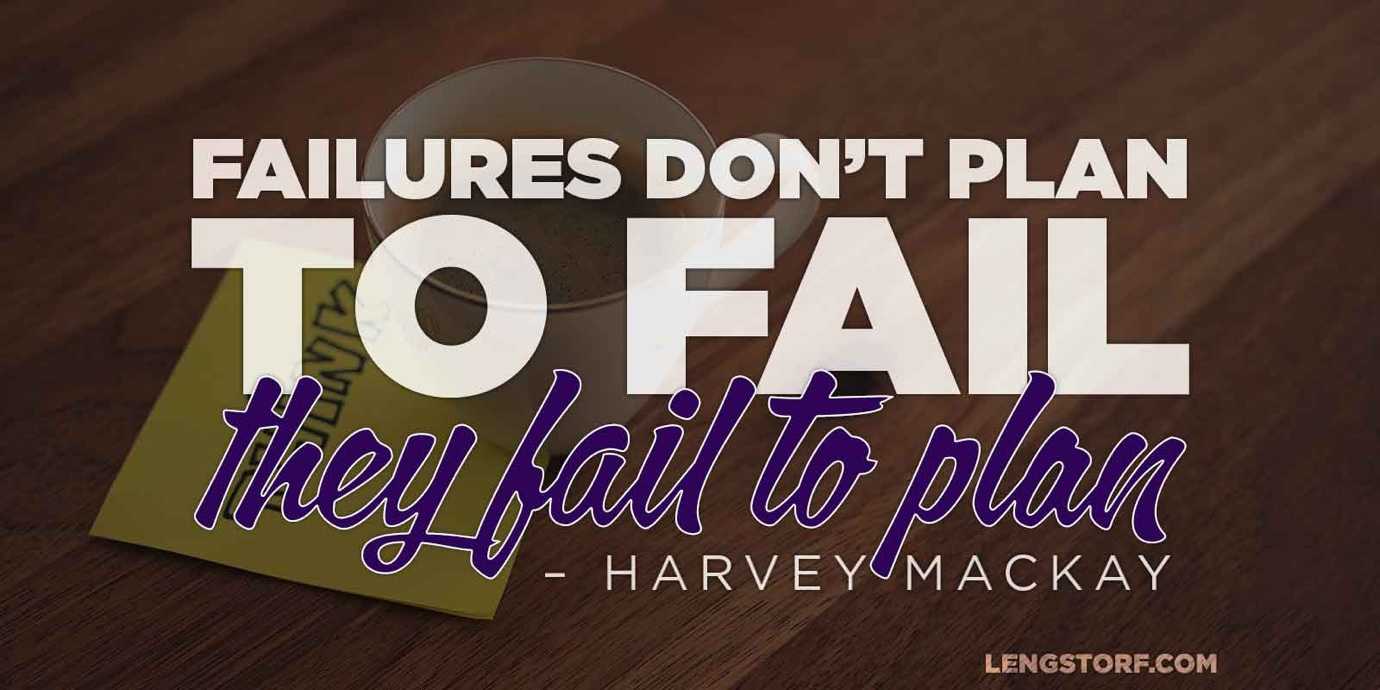The Art of Effective Planning: Avoid Wasted Time and Stress
I have a lot of good reasons to get my work done quickly:
- I work remotely, so the faster I get my tasks done, the faster I can call my workday over;
- I’m a digital nomad, so having more time to explore means a more complete experience of the places I’m staying;
- I’m constantly staring down a long list of things I want to work on, so getting things done quickly allows me to tackle my passion projects without burning the candle at both ends.
In the past, my approach was to throw myself headlong into a new project — working furiously for as long as I could manage, hacking and slashing toward the finish line.
These days, I slow down, take a breath, and make a plan for my work day. Then when I go hard, I go hard. And then I’m done for the day and I go to lunch.

Do You Know the Risks of Poor Planning?
Without a plan, you’re hoping. You hope you understood what your boss wanted. You hope this feature is necessary. You hope this is what the client meant by “make it pop”. You hope you’ll find a way to wrap up this article coherently.
Hope — for all the good it brings — is a terrible thing to rely on when you have deadlines to meet.
You don’t want to hope you’re getting it right. You want to know you’re getting it right.
Lack of Direction Can Cause Lack of Motivation
If the project isn’t explicitly laid out, it’s easy to spin your wheels or procrastinate.
There’s no clear first step, and that makes it hard to know if you’re starting the right way.
Moving from “to do” to “in progress” is a big mental barrier, and poor planning can make it even bigger.
Work Ends Up Wasted
If you do a bunch of work under incorrect assumptions, you’ll end up doing that work over again.
A murky understanding of a project’s end goals means you’re likely to spend effort in the wrong areas, wasting time and energy unnecessarily.
You End Up Chasing a Moving Target
Working without planning is an excellent way to waste hours. It doesn’t mean that you don’t plan at all, it just means you’re forced to plan at the same time you’re working.

In addition to the whole thing where humans are terrible at multitasking, planning on the fly means hoping that the completed work meets all the requirements — even the ones that aren’t clear yet.
Defining goals late in the production schedule almost always results in wasted or duplicated efforts, and it’s a great way to paint yourself into a deadline corner.
Interruptions Are Guaranteed
Whenever I work on a project where I don’t have a clear understanding of the goals, I’m frequently forced to stop and fire off an email asking for clarification.
On a web design, I might know that I need to build a home page, but I have to stop and ask if the main focus of the home page is to highlight the newsletter list or to drive readers to the blog. That’s vital to the project’s outcome — if I don’t have that information beforehand, I’m hamstrung until I hear back from the decision makers.
The same holds true for self-directed projects: if I have to stop working to think about the strategy, I’m context switching and adding unnecessary mental fatigue.
How to Make Projects Easier, Faster, and Less Frustrating
Proper planning doesn’t need to involve hours of meetings, flowcharts, or Post-It notes. It really just boils down to defining what “success” means — in quantifiable terms — before work begins on a project.
Make the Project’s Goals Easy to Measure and Hard to Misinterpret

Imagine you’re helping prepare for a party, and the host asks, “Hey, can you order pizza?”
In theory, that’s enough information to move forward and complete the task.
However, without more information, you’ll have to make a lot of assumptions.
For example, how many people are coming? Is anyone vegetarian or lactose intolerant? Are we still doing the gluten-free thing? Anyone who doesn’t eat pork products?
To improve, set clear goals: get enough pizza for 20 people, including vegetarian options. Also, order cheese sticks.1
The original goal — order pizza — was hard to measure. A single slice technically meets the requirements. No one’s happy, but, hey! you told me to order pizza — not pizzas — so this is clearly not my fault.
The second goal is easy to measure and has far less room for misinterpretation: were all 20 people fed? Did the vegetarians have pizza to eat? Did I get my cheese sticks?
And this is just pizza — on bigger projects, there are dozens more clarifications needed before work starts.
Defining clear goals with easily measurable outcomes is good for everyone. For the boss or client, it provides the security of being sure the person doing the job is fully aware of what’s required in order to call the project a success. This alleviates the need for micromanagement, freeing up time for other tasks.
For the person doing the work, measurable goals eliminate ambiguity. It gives well-defined targets to shoot for, and creates simple check boxes that instantly measure whether or not the project is completed.
As a bonus, it requires the boss or client2 to fully consider their idea and provide clear direction — this avoids the “I’ll know it when I see it” dilemma by removing that option as a possible outcome.
Write Down the Goals and Post Them for Everyone on the Project
In agency speak, this is a “scope of work” — a document that details everything expected of everyone involved, agreed upon by everyone involved, to show that everyone A) agrees on what “done” looks like, and B) feels confident that they have what they need in order to do the job well.

Write down everything required before the project is considered complete, and make sure the whole team has reviewed and approved it.
Emphasize to the decision makers that anything not on the list of goals will not be done, so the list needs to be complete.3 Emphasize to the doers that they need to prove that tasks are completed, so the list needs to have quantifiable tasks.
This is extremely easy to blow past in early meetings, but trust me: I’ve never — never — worked on a project without a clear scope that didn’t run up against some kind of confusion, delay, tension, or (most commonly) all of the above.
Take the time to do a thorough job on the scope, and everyone will be happier.
Make a Todo List from the Goals
After you have a clear scope, you can break a project down into a series of yes-or-no questions that act as your project roadmap and todo list.
Going back to the pizza example, the project becomes three todo items:
- Order enough pizza to feed 20 people
- Make sure there are vegetarian options
- Order cheese sticks
This is incredibly clear, and — I hope — impossible to fuck up.
Did you order seven or eight pizzas? Yes. Check.
Did you make sure three or four don’t have meat? Yes. Check.
Did you order cheese sticks? Yes. Check.
Boom. This project is measurably complete. If this isn’t what the requester wanted, it’s because the project was improperly defined.
This is incredibly freeing as the person doing the work: creating a todo list from the project goals builds a map to completion and adds an obvious indication of progress.
The same benefits exist for clients, managers, and bosses: the project is either done according to the plan or it isn’t; no micromanagement or office policing required.
Use Low-Cost Prototypes when Necessary
If a project is complex enough, hashing out the details may require a prototype or working draft for review.
If work is required to flesh out an idea, keep it simple and low-cost.
At my job, we use an approach called the Shitty First Draft to allow for rapid, lo-fi creation of “real” prototypes that give the whole team a feel for how something will work, but without any polish or unnecessary effort. We build something quick and dirty, and that’s usually enough to work out the rest of the details.
A Few Hours of Planning Can Avoid Weeks of Wasted Time
Laying out a solid plan is vital for a project to be completed on schedule, on budget, and without unnecessary stress.
Stated more plainly, planning is not optional. I’ve ignored this advice in the past, and it’s always proven to be a source of pain later in the process.
On the flip side, I’ve never once put together a project plan and thought later, “Dang, I sure wish I hadn’t planned so well.”
It doesn’t take much more than asking questions and writing things down. You’ll spend a couple (potentially boring) hours doing it.

But you know what you’ll gain?
You’ll gain weekends of relaxation because you’re not scrambling to complete a late-stage feature that has to launch Monday.
You’ll gain evenings off because you aren’t staying late after spending the whole day in meetings trying to get guidance for features instead of working on them.
You’ll gain camaraderie with your team and clients because there’s no misunderstanding to cause resentment or tension.
Most importantly, you’ll gain all the benefits that come from completing projects on time, on budget, and without huge hassles or setbacks.
How Do You Plan?
Have you run up against projects where poor planning has wrought havoc? How have you adjusted moving forward to make things easier?
How do you plan your projects? Let me know in the comments!
Hey! Cheese sticks weren’t on the original work order! But now that we’ve thoroughly considered the goals of the project, cheese sticks were always necessary.
If you’re working on a personal project, you may think, “I don’t need to define the scope — I can figure it out as I go.” You’re not wrong, but you’re probably about to make your life a lot harder than you need to. I’m speaking from experience, here.
This is especially important if you’re working with paying clients. The scope is what keeps the price where it is — if the scope changes, the price changes. Without clearly defined, measurable scopes, you’re almost guaranteed to run into scope creep, and that either means you’re working for free or your client is paying money they didn’t expect to pay — in either scenario there’s unnecessary tension and resentment.
What to do next.
As adults, we’re supposed to build careers, build relationships, build futures, build happiness… It’s all pretty overwhelming. It’s easy to feel stuck — like we’re on autopilot, punching a clock, and buried in tasks we don’t really care about.
Wouldn’t it be nice to get some balance back? To have extra time every day to dedicate to the things that actually matter to you?
I want to help: I’ve compiled 5 Habits of the Unfuckwithably Productive, and I want to give it to you for free. These are time-tested habits that helped me break the cycle of overwork and exhaustion; this is how I spend less than 40 hours a week on the computer — while making a living and traveling the world.